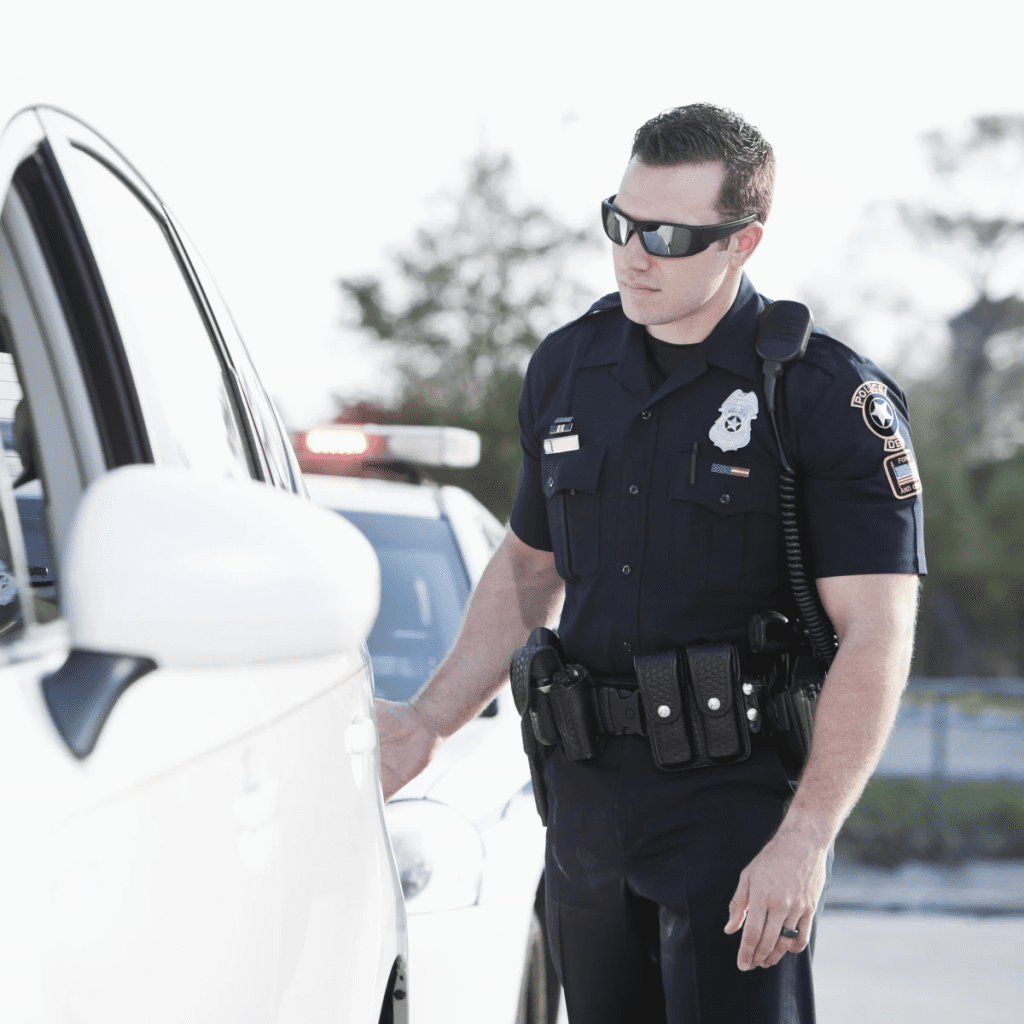The sight of flashing red and blue lights in your rearview mirror can spark a wave of anxiety for any driver. As you pull over, a police officer approaches your vehicle, and amid your worries about paperwork and speeding tickets, you notice the officer touching your car’s tail light. This small, almost unnoticeable action has puzzled many drivers, leaving them to wonder if it’s just a quirky habit or if there’s more to the story. So, why do police officers always touch the car’s tail lights during traffic stops?
Documenting the Traffic Stop

One of the main reasons officers touch a car’s tail light during a stop is to document the interaction. By physically touching the vehicle, the officer leaves behind their fingerprints on the car. This serves as a small yet crucial piece of evidence that links the officer to the stop.
In situations where a dispute arises about whether the stop occurred, these fingerprints can offer solid proof that the officer made contact with the vehicle. It’s like leaving a timestamp, which can be invaluable if there’s a need to verify what happened during the stop. This simple action serves as a breadcrumb trail, helping to validate the officer’s presence at the scene.
Enhancing Officer Safety
Traffic stops can be risky, with officers often approaching vehicles unaware of what they might encounter. Touching the tail light is a way to create evidence of their interaction at the scene. In rare cases where the stop escalates or something goes wrong, such as the driver fleeing or endangering the officer, this physical evidence can help investigators piece together what transpired.
While it may seem like a minor detail, this step ensures that, in case of an emergency, there’s a record connecting the officer to the specific vehicle involved. Traffic stops rank high on the list of dangerous situations for police officers, and every precaution taken, no matter how small, can be critical in maintaining safety.
Deterring Suspicious Behavior
Another reason officers touch the tail light is to deter potential criminal activity. The gesture is often visible to the driver, signaling that the officer is closely observing them and the vehicle. This small action acts as a subtle deterrent, reminding the driver that their actions are being monitored.
For anyone considering hiding contraband or engaging in illegal behavior, knowing that the officer has already made contact with their vehicle can make them think twice. The act of touching the car implies that the officer has established a connection and is actively paying attention, thus discouraging any attempts to dispose of evidence.
Establishing a Routine
Law enforcement professionals rely heavily on routines and protocols to maintain focus and reduce the chances of mistakes. Touching the tail light is part of many officers’ established routines, ensuring consistency across all traffic stops. By following a set pattern of actions, officers minimize the likelihood of overlooking any critical details.

Routine actions also help officers remain alert to potential threats, reducing distractions. When an officer approaches a vehicle, they need to stay sharp and aware of everything around them. A consistent routine makes sure that nothing is missed during the critical moments of a traffic stop.
Demonstrating Authority
Touching the tail light may seem like a small act, but it also serves as a subtle display of authority. When officers approach a vehicle, they need to establish control over the situation. This is crucial for both their safety and the orderly conduct of the stop. By touching the tail light, the officer demonstrates their engagement in the stop, reminding the driver of the seriousness of the interaction.
This act helps set the tone for the stop, signaling to the driver that they are dealing with a professional officer who has authority over the situation. Such small gestures can make a big difference in ensuring that drivers remain compliant and respectful throughout the encounter.
Cultural Traditions in Law Enforcement

In some departments, the act of touching the tail light has become more than just a routine—it’s evolved into a cultural tradition within policing. While the practice may have originated from more practical reasons, it now serves as a symbol of respect and professionalism in some law enforcement circles.
Touching the car can be a subtle way of signaling the start of the interaction. It shows that the officer is conducting the stop properly and is respectful toward the driver and passengers. Although this tradition isn’t universally followed across all departments, in some regions, it remains a mark of careful and courteous policing.
The Hidden Layers Behind a Simple Gesture
So, why do police officers always touch the car’s tail lights? As we’ve explored, the reasons behind this small gesture go far beyond mere habit. It plays a crucial role in documenting the stop, enhancing officer safety, deterring suspicious activity, and establishing control over the situation. For some officers, it also serves as a symbolic gesture of professionalism.

This simple act, often unnoticed by drivers, is one of many small but significant routines that officers use to maintain order, ensure safety, and carry out their duties effectively. Understanding these practices not only demystifies law enforcement procedures but also fosters better communication and respect between police officers and the public.
Conclusion
The next time you find yourself pulled over and witness an officer touching your car’s tail light, remember that it’s more than just a random action. This small gesture holds multiple layers of purpose, from documenting the interaction to ensuring the officer’s safety and deterring illegal activity. While it might seem insignificant at first glance, it represents the careful planning and professionalism that goes into every traffic stop.
By shedding light on this routine, we can appreciate the complex thought processes and safety measures that officers employ in their daily duties. Understanding these seemingly small acts can lead to more informed and respectful interactions between drivers and law enforcement, making the roads safer for everyone.